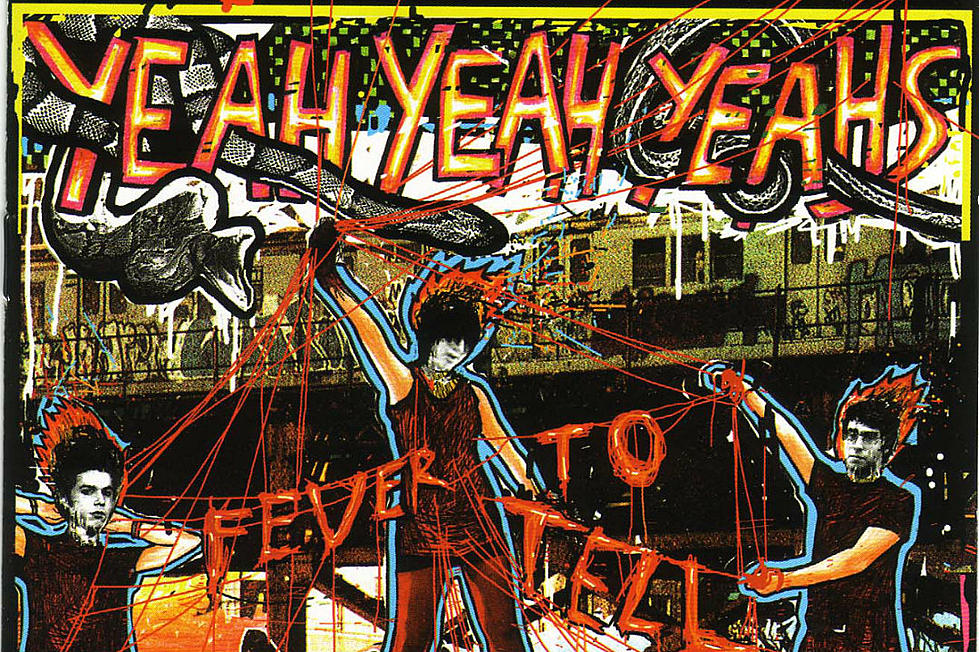
Cover Stories: X, ‘Los Angeles’
Punk has been responsible for some of music's greatest album covers: Never Mind the Bollocks, London Calling, the great Raymond Pettibon sleeves for Black Flag. For my anarchist dollar, though, Los Angeles, X's 1980 debut, is the one sleeve to rule them all.
Nothing else in the album racks looked like it. The photo implied so many things -- the Watts riots of '65 setting Los Angeles on fire, the grainy footage of Klan rallies, a fiery ghost embracing the band's logo. Jason Draper even suggests in A Brief History of Album Covers that the sleeve was something of a crystal ball:
"A simple, burning wooden 'X' is an obvious ground zero-style manifesto from the position of Los Angeles punk, but also mimics the burning cross symbolism often associated with the Ku Klux Klan. There is no suggestion whatsoever that X had anything to do with KKK sentiments (in fact, very much the opposite), but as far as arresting images go, the burning cross is one of the more inflammatory (no pun intended). Considering the fact that Los Angeles would be set ablaze by race riots just 12 years later, it is also remarkably prescient."
What X (and the punk movement -- see also, the Dead Kennedys' Fresh Fruit For Rotting Vegetables sleeve) tapped into is that the world is always on fire. Injustice is always happening, both institutionally and privately. The old is constantly making way for the new. Our passions burn fiercely, be they artistic, romantic, political, whatever. Fire is such a powerful metaphor that it's no surprise that 26 years later a reunited X named their 2006 tour "As the World Burns."
That's all fine speculation, but for the real story we went right to the source. Singer/bassist John Doe founded X along with guitarist Billy Zoom in 1976. If anybody could tell us the story behind Los Angeles's iconic sleeve it's Doe, so we asked him.
What can you tell us about that first album cover?
We really didn't know what to do for a record cover, so Bob Biggs, who owned Slash Records [X's label] and Slash magazine, built an X out of plywood, I believe. It was eight feet tall. He took it out to the desert and covered it in rubber cement and set it on fire and they took a film of it.
There were all these frames of this film of the burning X and there was one frame where that little face sort of appeared in the middle of it and everyone said, "That is provocative and striking." So it was a no brainer.
What about the other photos -- the inner sleeve and back cover?
Frank Gargani was the photographer who took the inner sleeve photo. He had this big mountain of dirt built and put up these candles. We went down to this overpass by the L.A. River and we took photographs from midnight until 2 in the morning. That was that. The other photos -- the individual photos -- were stripped together in the dark room for the back cover.
Was there much controversy about the album cover when it was released?
A few people said, "Why do you have a burning cross on your record?" No, it is not a burning cross, it is a burning X.
One of the jobs of music is to be provocative. A lot of the songs on the first two records were to shake things up, so I used words like n-----r and Jew and stuff like that. I still feel that way -- that people are all bent out of shape because they can't deal with racism. They can't deal with all those difficult subjects, like the song "Johnny Hit and Run Paulene." It is worse now than it ever was, people getting sexually assaulted and raped. So, sometimes that is a little hard to sing, but on the other hand you have to open your eyes and try to address the situations.
Being provocative was, I think,what artists back in the 1800s and 1900s were doing. Andy Warhol did it. We weren't the first and won't be the last.
More From Diffuser.fm









